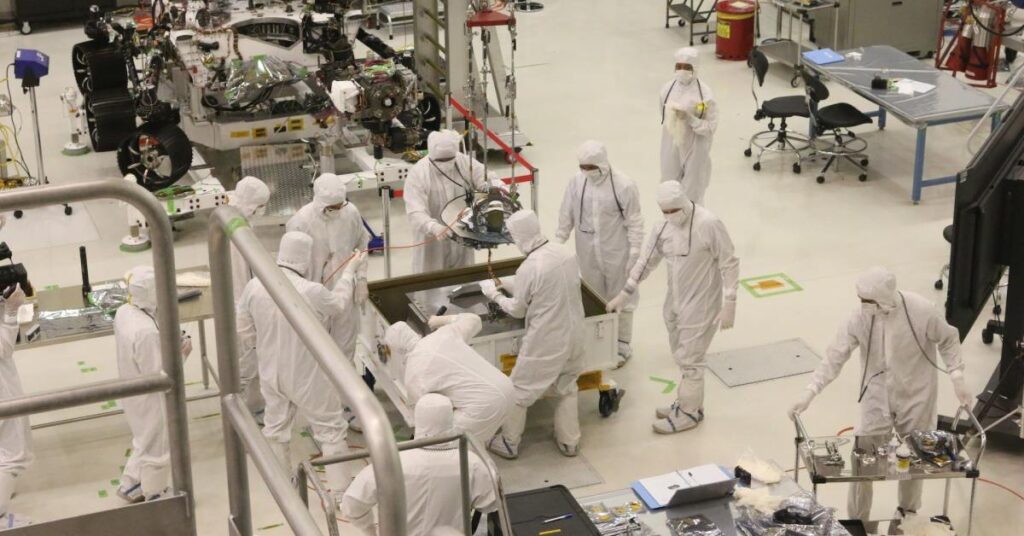
How to Choose an Online MBA
Online MBA programs make their degrees available to everyone everywhere, [...]
This website may earn a commission if you make a purchase after clicking on a product link in this article
When people ask Elon Musk how he learned to build rockets, he reportedly responds by saying, “I read books.” Musk—the creator of PayPal, SpaceX, and most recently, the brutalist triangle that is the Tesla Cybertruck—is always hungry for the written word. It’s what inspired him as a child, introduced him to heroes like Tolkien’s Frodo Baggins and Asimov’s Hari Seldon, and yes, helped him learn rocket science.
The truth is that no matter how many degrees or accolades you have, books will always have the power to teach you something new. A simple enough notion, one that has legendary business names making reading a part of their daily lives. Bill Gates reads 50 books every year, calling it the primary way he tests his knowledge. Businessman and philanthropist David Rubenstein’s reading habits consume eight newspapers a day and six books a week. According to Harvard Business Review, “Nike founder Phil Knight so reveres his library that in it, you have to take off your shoes and bow.”
It’s not just billionaire innovators and entrepreneurs who benefit from sitting down with a book, but all types of people at a vast range of stages in their business careers, including those considering business school. As a prospective student, reading is one of the best ways to gain a multifaceted understanding of business and management principles while learning what to expect from a postgraduate program. It will also help you become a better writer and thinker, and allow you to experience the perspectives of some of the most well-respected minds in the field.
But where do you begin? Some of our favorite titles are bestsellers, while others are on reading lists at business schools you’ve definitely heard of. All contain lessons you can use not only to succeed in your program, but as you start out in your career.
A follow-up to Bill George’s 2003 “Authentic Leadership: Rediscovering the Secrets to Creating Lasting Value” this 2007 bestseller stands as a paragon of leadership, based on research and first-person interviews with 125 of the world’s top leaders. In it, former Medtronic CEO Bill George and co-author Peter Sims share the wisdom of these while making a persuasive argument that the journey toward authentic leadership—that finding and pursuing your true self and defining your motivations and values—is the key to success.
George and Sims glean original and illuminating stories from Warren Bennis, Sir Adrian Cadbury, Charles Schwab, Howard Schultz, and Carol Tome, among a long list of noteworthy names in the business world as a means of illustrating the experiences that shape their lives and work. A common theme? Many of these leaders were profoundly impacted by what George and Sims call a “crucible,” or a signal event or challenging situation that helped them develop to perspective and self-awareness—and realize their potential.
| University and Program Name | Learn More |
|
Pepperdine University:
Online Master of Business Administration
|
|
|
Stevens Institute of Technology:
Online Master of Business Administration
|
|
|
Merrimack College:
Master of Science in Leadership
|
|
|
Merrimack College:
Master of Science in Management
|
|
|
The University of Tennessee:
Online Master of Business Administration
|
Why can’t a specific franchise be as popular in a suburban area as it is in the city? Why can’t doubling a recipe be as simple as combining all of the original ingredients, twice over? Why isn’t an intimate gathering with, say, 500 of your closest friends as feasible as it is at 5? If these types of questions have ever crossed your mind, you’re likely interested in finding out how you can replicate something in another place with other people. That, or you’re up for reading anything recommended by the Business School at Harvard University.
Enter bestselling author Robert Sutton of Stanford University’s School of Engineering and his colleague Huggy Rao, tackling a challenge that determines nearly every organization’s success: Scaling up farther, faster, and more effectively. The authors have devoted much of the last ten years to uncover what it takes for businesses not only to create exceptional performance in the market, but to grow their success and leverage their accomplishments to produce even better outcomes.
Their work is full of nuggets from what they call a “seven-year conversation,” in which Sutton and Rao combed through hundreds of academic studies, conducted detailed case studies and targeted interviews, and presented emerging ideas to a wide range of business audiences. Through it all, they provide readers with practical advice to address any scaling challenges they may face.
Originally self-published, Gordon MacKenzie’s 1998 business cult classic offers students and professionals alike an empowering and entertaining look at the intersection between human creativity and profit. In it, he advises readers to “orbit the giant hairball,” or to push the boundaries of deep-rooted corporate patterns.
The phrase is one he coined during his career at Hallmark Cards, a $2.6 billion company known for its ingenious symbiosis with virtually every kind of life milestone. Here, MacKenzie spent 30 years in roles like Head of Contemporary Design and later, Creative Paradox—an actual job title he made up for himself.
It was while working as a Creative Paradox that he became a liaison between the chaos of creativity and the discipline of business, and came up with the hairball analogy. He uses it to describe an entangled pattern of behavior in which bureaucracy doesn’t allow workers much space for original thinking and creativity, and they accept it. It also describes the corporate tendency to rely on past policies, decisions, and processes as a formula for future success.
“What is the biggest obstacle to creativity? Attachment to outcome,” MacKenzie writes. “As soon as you become attached to a specific outcome, you feel compelled to control and manipulate what you’re doing and in the process, you shut yourself off to other possibilities. Creativity is not just about succeeding. It’s about experimenting and discovering.”
You’ve likely seen this title come up in articles, blog posts, referenced in interviews, and even the reading lists of top b-schools like the Wharton School at the University of Pennsylvania and the Graduate School of Business at Stanford University. Its popularity is in part due to its author, a Socratic advisor to leaders in the business and social sectors. It may also find a link with the over quarter-century he’s spent conducting rigorous research on business development. With this book, Collins and his team ask, can a good company become a great company. And if so, how?
Based on a five-year research project comparing companies that made the leap from good to great to others that didn’t, Collins shows that greatness stems not from luck or circumstance, but a matter of conscious choice and discipline. Ultimately, his framework for success may be deceptively simple. Great companies face the realities of business head-on. They continuously review and act on data, and keep unwavering faith in their vision, team, and goals.
How do habits work? Why do people participate in self-destructive behavior? Can a new habit cause an organization to change for the better? How do you form a good habit, anyway? These questions are answered by award-winning business reporter Charles Duhigg, who explains why habits exist and how they can be changed.
Duhigg’s first theory is somewhat simple. We create and maintain habits to conserve mental energy so we can think about more complex and challenging issues, like figuring out how to cover student loan payments and who closes the bus door once the driver gets off. Our habits can be good or bad or neutral, but once established, they never really leave us. Instead, they tend to lurk in our consciousness, waiting for us to rediscover them.
Later, he discusses neurological discoveries about how habits work in the brain—the loop of cue, routine, and reward—and applies them to individuals, social movements, and companies like Procter & Gamble and Target. Compelling stories aside, Duhigg names high levels of willpower as the single most significant predictor of success among business professionals , particularly in the face of disappointment and rejection. Making willpower into a habit in itself, he asserts, is among the most important decisions they can make.
Questions or feedback? Email editor@noodle.com

Online MBA programs make their degrees available to everyone everywhere, [...]

In 2004, Burton D. Morgan Foundation and other Cleveland organizations [...]

International marketers have to consider local language(s), local norms and [...]

Organizations must design facility layouts and workstations in a way [...]

Many aspiring entrepreneurs understand the basic idea that the firm [...]
Categorized as: Business Administration, Business & Management